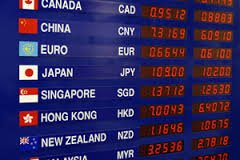Exchange rate risk is the potential loss as a result of currency fluctuations. This potential loss occurs according to its volatility and position at a given time. It is also known as currency risk.
The risk in the exchange rate refers to the possible changes in the price of one currency against another. So, depending on the position we have, the volatility of the currency and the period of time that we consider, a movement in value can make us win or lose money.
Exchange risk occurs when transactions take place in currencies other than the national currency, either in the country itself or abroad, in such a way that the profitability of the transaction will depend not only on the profit obtained in the transaction or investment but also on its value with respect to the national currency, during a specific period of time.
How to offset exchange rate risk
To neutralize this type of problem, there are hedging elements that the investor can use. An example of this would be negotiating the operation in national currency. In this way, any important movement in the exchange rate does not imply an incidence for the value of the traded good.
Among the instruments that can be used to hedge movements in exchange rates, we have swaps, options, futures, and the like. In this way, if we lose with the main asset we will earn the same amount with the financial derivative and thus we have eliminated the exchange risk. The disadvantage is that if, on the contrary, the exchange rate goes in favor of our main asset, we will lose money with the financial derivative in which case it would have been better not to cover the transaction. However, what we are looking for is to eliminate the risk, not to have a successful operation with financial derivatives. For this, we will have to decide when to cover the risk and when not.
Currency Risk Example
Let’s imagine that we want to sell machinery to Russia, where the ruble is quoted at €1=7 rubles, payable in 180 days.
If the sale price is 3,000 euros, we will sell it at 21,000 Russian rubles at the moment, however, let us imagine that for some economic or political factor, the euro appreciates or the ruble reduces value during the six months that the payment will be delayed so that the euro is now trading at 10 rubles.
In this way we will only receive 2,100 euros, losing part of the value that we initially had before the conversion.
This is what is known as exchange rate risk, which for international transactions and trade is an important element to take into account since the value of currencies varies every day and this can be detrimental to producers (and thus itself a win for buyers).






